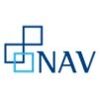Filter interviews by
Grant Thornton Bharat Consultant Interview Questions and Answers
10 Interview questions
Stretched payables should be included in net debt analysis as they represent a liability that impacts the company's financial health.
Stretched payables are essentially trade payables that have been extended beyond the usual payment terms agreed upon with suppliers.
Including stretched payables in net debt analysis provides a more accurate picture of the company's financial obligations.
Failure to account for stretch...
GST journal entry for credit purchase
Debit the purchase account
Credit the GST input account
Credit the supplier account
Ind AS 115, 116, 41 are accounting standards for revenue recognition, leases, and agriculture respectively.
Ind AS 115 deals with revenue recognition and replaces the previous standard Ind AS 18
Ind AS 116 deals with leases and replaces the previous standard Ind AS 17
Ind AS 41 deals with agriculture and covers accounting for biological assets and agricultural produce
These standards are applicable to companies in Ind...
Carve outs in IND AS and IFRS refer to exceptions or exclusions from the standard accounting treatment.
IND AS 101 allows first-time adopters to use previous GAAP for certain items
IFRS 1 allows exemptions for certain disclosures and retrospective application
IND AS 109 has carve outs for hedge accounting and impairment
IFRS 9 has carve outs for financial liabilities and macro hedging
IND AS 115 has carve outs for cert...
OOPs stands for Object-Oriented Programming. It is a programming paradigm based on the concept of objects.
OOPs focuses on creating objects that contain data and methods to manipulate that data.
It emphasizes concepts like encapsulation, inheritance, and polymorphism.
Encapsulation refers to bundling data and methods that operate on the data within a single unit.
Inheritance allows a class to inherit properties and be...
Yes, I have worked on creating interactive dashboards for tracking key performance indicators.
Designed and developed interactive dashboards using tools like Tableau, Power BI, or Google Data Studio
Integrated data from multiple sources to create a comprehensive view of KPIs
Implemented filters, drill-downs, and visualizations to make the dashboard user-friendly
Worked closely with stakeholders to understand their req...
Fundamentals of audit involve examining financial records, internal controls, and compliance with laws and regulations.
Audit is a systematic examination of financial records, internal controls, and compliance with laws and regulations.
Auditors gather evidence to support their findings and opinions.
Audits can be external (performed by independent auditors) or internal (performed by employees within the organization...
Schedule 3 of Companies Act is a list of disclosures that companies must make in their financial statements.
Schedule 3 outlines the minimum disclosures required for companies to comply with the Companies Act.
It includes information on fixed assets, investments, inventory, debtors, creditors, and more.
Companies must ensure that their financial statements include all the necessary disclosures as per Schedule 3.
Failu...
The golden rule of accounting is to maintain a balance between assets, liabilities, and equity.
Assets = Liabilities + Equity
This equation must always be balanced in order to ensure accurate financial statements
Any changes to one side of the equation must be reflected on the other side
For example, if a company takes out a loan (liability), their assets will increase by the amount of the loan, but their equity will ...
Ind AS 109 prescribes the principles for recognition, measurement, presentation and disclosure of financial assets, financial liabilities and equity instruments.
Ind AS 109 applies to all financial instruments except for those specifically excluded.
Financial assets and liabilities are recognized when the entity becomes a party to the contractual provisions of the instrument.
Equity instruments are recognized when th...
Grant Thornton Bharat Consultant Interview Experiences
25 interviews found
I appeared for an interview in Mar 2025, where I was asked the following questions.
- Q1. Internal controls
- Q2. Financial reporting
- Q3. Accounting questions
- Q4. Journal entries
(1 Question)
- Q1. Fundamentals of audit
- Ans.
Fundamentals of audit involve examining financial records, internal controls, and compliance with laws and regulations.
Audit is a systematic examination of financial records, internal controls, and compliance with laws and regulations.
Auditors gather evidence to support their findings and opinions.
Audits can be external (performed by independent auditors) or internal (performed by employees within the organization).
The...
I applied via Campus Placement and was interviewed in May 2024. There was 1 interview round.
(2 Questions)
- Q1. Recurring invoices
- Q2. Consolidation process
I applied via Campus Placement and was interviewed in Nov 2023. There were 3 interview rounds.
Mid level difficulty
It was more like a debate, One team has to put their points in favor and one team has to put their points in against the topic.
(1 Question)
- Q1. What's your favourite subject? Familiar with MS-excel?
Interview Preparation Tips
I appeared for an interview in Aug 2023.

(2 Questions)
- Q1. Asked questions on job role, previous experience
- Q2. Why do you want to join grant Thornton
(2 Questions)
- Q1. Why do you want to change your job
- Q2. Because work was very monotonous
I applied via Campus Placement and was interviewed in Jan 2024. There were 3 interview rounds.
India as a cash economy
Accounts questions were asked
(3 Questions)
- Q1. Tell me about yourself
- Q2. Questions on every term, education internship written in resume
- Q3. Three interviews were conducted, 2 were HR questions +technical and third was interviewed by Partner
Interview Preparation Tips
I appeared for an interview before Apr 2024, where I was asked the following questions.
- Q1. Project related
- Q2. Msme sector related
Interview Preparation Tips
I applied via Company Website and was interviewed in Oct 2023. There was 1 interview round.
(1 Question)
- Q1. How would you consider stretched payables in net debt analysis?
- Ans.
Stretched payables should be included in net debt analysis as they represent a liability that impacts the company's financial health.
Stretched payables are essentially trade payables that have been extended beyond the usual payment terms agreed upon with suppliers.
Including stretched payables in net debt analysis provides a more accurate picture of the company's financial obligations.
Failure to account for stretched pa...
I applied via Approached by Company and was interviewed before Feb 2023. There were 2 interview rounds.
Lean Six Sigma case study
(5 Questions)
- Q1. Tell us about any of your project.
- Q2. Scenario based questions
- Q3. Scenario based questions on hypothesis tests
- Q4. Scenario based questions on data gr&r
- Q5. Scenario based questions on control charts
Interview Preparation Tips

(2 Questions)
- Q1. 1. Introduce Yourself 2. CV related questions 3. ISD (GST) 4. GTA (GST) 5. Recent amendments, E-Invoice, Lottery
- Q2. How you keep yourself updated with changes.
Interview Preparation Tips
Top trending discussions






Grant Thornton Bharat Interview FAQs
The duration of Grant Thornton Bharat Consultant interview process can vary, but typically it takes about less than 2 weeks to complete.
Tell us how to improve this page.
Grant Thornton Bharat Interviews By Designations
- Grant Thornton Bharat Consultant Interview Questions
- Grant Thornton Bharat Senior Consultant Interview Questions
- Grant Thornton Bharat Senior Associate Interview Questions
- Grant Thornton Bharat Management Trainee Interview Questions
- Grant Thornton Bharat Audit Associate Interview Questions
- Grant Thornton Bharat Assistant Manager Interview Questions
- Grant Thornton Bharat Summer Intern Interview Questions
- Grant Thornton Bharat Associate Interview Questions
- Show more
Interview Questions for Popular Designations
Overall Interview Experience Rating
based on 26 interview experiences
Difficulty level
Duration
Consultant Interview Questions from Similar Companies
Grant Thornton Bharat Consultant Reviews and Ratings
based on 116 reviews
Rating in categories
|
Consultant
412
salaries
| ₹8.1 L/yr - ₹13.5 L/yr |
|
Assistant Manager
198
salaries
| ₹13.5 L/yr - ₹22 L/yr |
|
Senior Consultant
150
salaries
| ₹9 L/yr - ₹15 L/yr |
|
Manager
87
salaries
| ₹20 L/yr - ₹33.5 L/yr |
|
Associate Director
53
salaries
| ₹28 L/yr - ₹43.9 L/yr |

EY Global Delivery Services ( EY GDS)

BDO India LLP

RSM India

NAV Backoffice
- Home >
- Interviews >
- Grant Thornton Bharat Interview Questions













